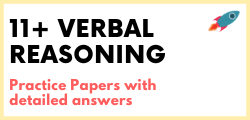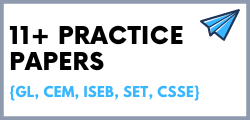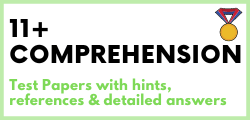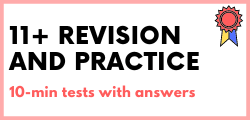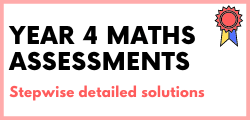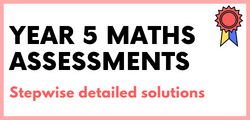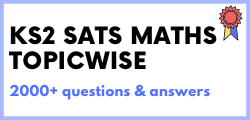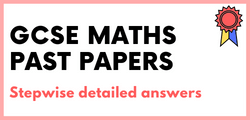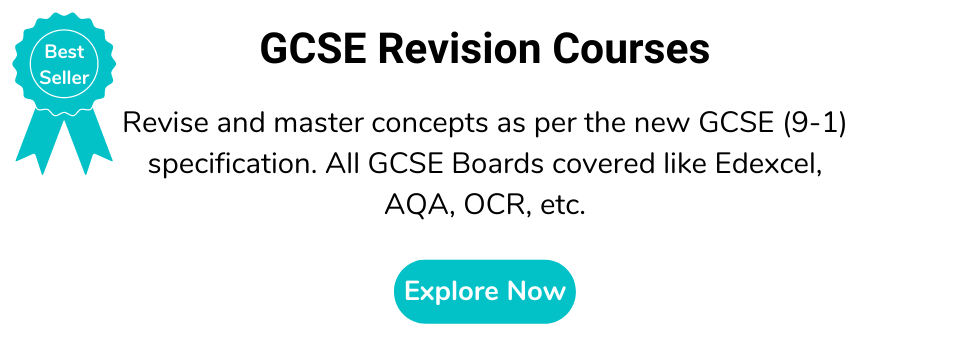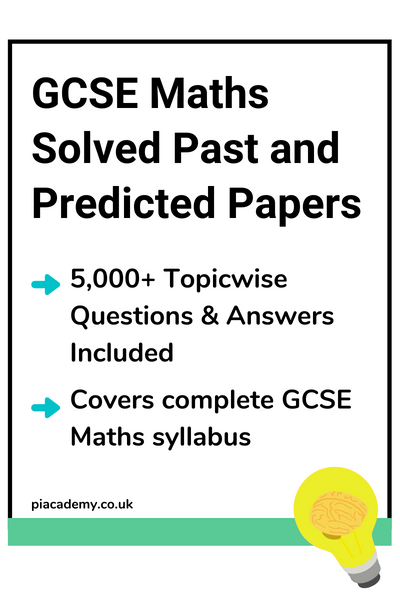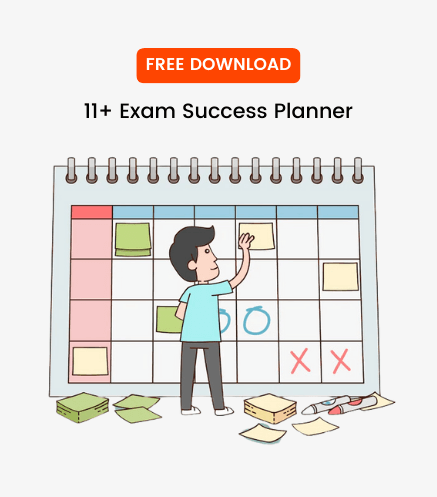GCSE Maths Syllabus at a Glance
The GCSE Maths syllabus, in brief, is as follows:
- Number
- Algebra
- Ratio, proportion and rates of change
- Geometry and measures
- Probability
- Statistics
The exam has two levels; Foundation tier – grades 1 to 5 and Higher tier – grades 4 to 9. Students have to appear for three GCSE maths papers in the same tier
Breakdown of the GCSE Maths Syllabus
Following are the GCSE maths topics and the explanation of each section of the syllabus
Number
This section deals with the main mathematical operations of addition, subtraction, multiplication and division. In addition, the student must know the following:
- Ordering of rational numbers
- Multiple
- Highest
- LCF – Least Common Factor
- Prime numbers
- Prime factors
Algebra
The student is expected to know the different symbols and notations used in GCSE algebra. The student must be able to distinguish between
- Equation
- Formula
- Identity
- Expression
The student is also expected to be adept in:
- Multiplication of two linear expressions
- Factorisation of quadratic expressions
- Simplification of rational expressions
- Simultaneous equations
- Parallel lines, equation of the straight line, plotting of the graph that corresponds to the straight-line equations
- Reflection, enlargement, rotation
- Direct and indirect proportions
- Graphs of loci and cubic functions
Geometry and Measures
The GCSE Geometry section deals with shapes of various kinds including:
- Angles
- Lines – perpendicular and parallel
- Triangles
- Polygons.
The student is expected to be able to calculate the sums of external and internal angles of polygons and quadrilaterals. The Pythagoras theorem in 2D and 3D is also part of the syllabus. Vectors are also included, and the student must know how to perform various operations such as difference, scalar multiplication, etc. on vectors.
Measures refer to the interpretation of scale drawings and maps. The student must be able to explain the effects of enlargement of area, volume and perimeter of solid shapes.
Probability
The student must demonstrate an ability to differentiate between even, equally likely and unlikely chances, as well as impossible events. The student will also be tested estimates, measures of probability, relative frequency and theoretical models. Probabilities of successive events such as tossing a coin or throwing dice are also covered.
Statistics
Students will be expected to understand and demonstrate the use of the following concepts from GCSE statistics:
- Bias, sample size and their relation to problems and conclusions
- Design of questionnaires and surveys with a clear understanding of population and sample size
- Design of data collection sheets
- Extraction of data from lists and tables
- Designing of tables for grouped and discrete data
- Charts, diagrams, histograms, etc.
- Mean, median, mode, range, etc.
Changes for GCSE 2022
Because of the pandemic, GCSE Maths papers will have a small change in the method of assessment. These changes apply only to the year 2022.
Students will be provided with a maths GCSE formula sheet for the exam. This means the student needs not learn the GCSE maths formulae. The sheet will be provided as an insert with the question paper. In case the student would like to see the format of the sheet, the sheets are available online.
GCSE Assessment Objectives
This refers to the way in which students will be assessed in their GCSE Maths papers. The Assessment Objectives (AOs) are set by Ofqual - Office of Qualifications and Examinations Regulation – and are thus standardised across all exam boards. They are as follows:
AO1: Use and apply standard techniques
Students should be able to:
- Accurately recall facts, terminology and definitions: This means students should have learnt the meaning and definitions of various mathematical terms
- Use and interpret notation correctly: This means the student must correctly use mathematical notations
- Accurately carry out routine procedures or set tasks requiring multi-step solutions: When answers have to be solved in multiple steps, students should be able to logically follow the steps and demonstrate them to achieve the final result.
AO2: Reason, interpret and communicate mathematically
Students should be able to:
- Make deductions, inferences and draw conclusions from mathematical information: This refers to the student’s ability to correctly deduce information from mathematical data provided
- Construct chains of reasoning to achieve a given result: Related to the last point in AO1, this objective means that students should be able to logically create the chains of steps to achieve the result
- Interpret and communicate information accurately: The student must be able to understand the problem and convey the solution clearly and accurately
- Present arguments and proofs: Solutions must show the steps used to achieve the result and these steps must be logical
- Assess the validity of an argument and critically evaluate a given way of presenting information: The student is expected to examine arguments presented in the paper and evaluate them.
AO3: Solve problems within mathematics and in other contexts
Students should be able to:
- Translate problems in mathematical or non-mathematical contexts into a process or a series of mathematical processes: It is important to note that the mathematical exam does use data from other streams. The student must be able to interpret non-mathematical data using mathematical principles
- Make and use connections between different parts of mathematics: The student must understand the different branches of mathematics sufficiently well to be able to connect them to solve a given problem
- Interpret results in the context of the given problem
- Evaluate methods used and results obtained: The student must demonstrate an understanding of the means by which results are obtained
- Evaluate solutions to identify how they may have been affected by assumptions made.
GCSE Maths Past Papers, Questions and Solutions
There are different ways in which the student can prepare for the GCSE Maths exams. This, of course, takes for granted that the student has already been taught the relevant principles and formulae in the classroom. Once the student has an understanding of these, the rest they can do is to revise GCSE maths and practice with the maths GCSE past papers
Mathematics is a subject that requires a lot of practice. Being a mainly practical subject, the student has to demonstrate a grasp of the principles by applying them to different problems that are presented in the paper. The student must take care to document all the steps taken to reach the solution. This not only shows the assessor that the student has understood the principles, but it also helps if the student makes an error. The assessor will generally give marks for having applied the correct steps, even if the student has made a calculation error.
One of the best ways to practise for the examination is to use GCSE maths past papers and GCSE topic wise questions. Sample papers can also be used to give the student an idea of the kind of GCSE maths questions to expect in the papers.
This kind of practice is also best taken by simulating, as much as possible, the conditions during the actual exam, including the time limits set. By practising under pressure, a student will be better able to handle the stress of the actual exam. Some teachers organise mock exams at the end of each year of the course of the GCSE programme. Some even organise mid-term simulated exams of the syllabus covered up to that point. All these practice exams are valuable in helping the student face the actual papers confidently.
Past GCSE maths papers and sample papers are available on the internet. Some sites also provide solutions. The student must avoid the temptation to simply read the problems and their solutions. Instead, the student must use the valuable resources of past papers and sample papers by attempting to solve them. These attempts must be made within the time limits set for the actual exam. This trains the student to be quick without sacrificing accuracy. It also mentally toughens the student so that he or she is able to handle the stress of the actual papers well.
First of all the student must be aware of which exam he or she is attempting, the Foundation Tier or the Higher Tier. The student must download the appropriate test papers and past papers for those modules. The following steps are of great help in using past papers and sample papers to prepare for the GCSE Maths exam:
- Ensure that you are downloading the correct papers.
- Check the time provided for each paper at the actual test.
- Approach the practice as you would approach the actual test; set time aside to solve the papers and keep family and friends away for the duration of the practice.
- Find out the mark scheme for each paper. Examiner’s notes are also very useful in preparing for the test. These tell you what the assessor is looking for and the distribution of marks for various aspects of each problem.
- Look for GCSE maths online practice resources. The BBC and Khan Academy have excellent resources to help you prepare for the maths examination.
- Videos are another great way to brush up on various topics in maths. Ensure that you are watching the correct video for the topic.
- Parents can try to get an expert GCSE maths tutor on board to get their child a better pathfinder on their expedition of the GSCE Maths exam.









